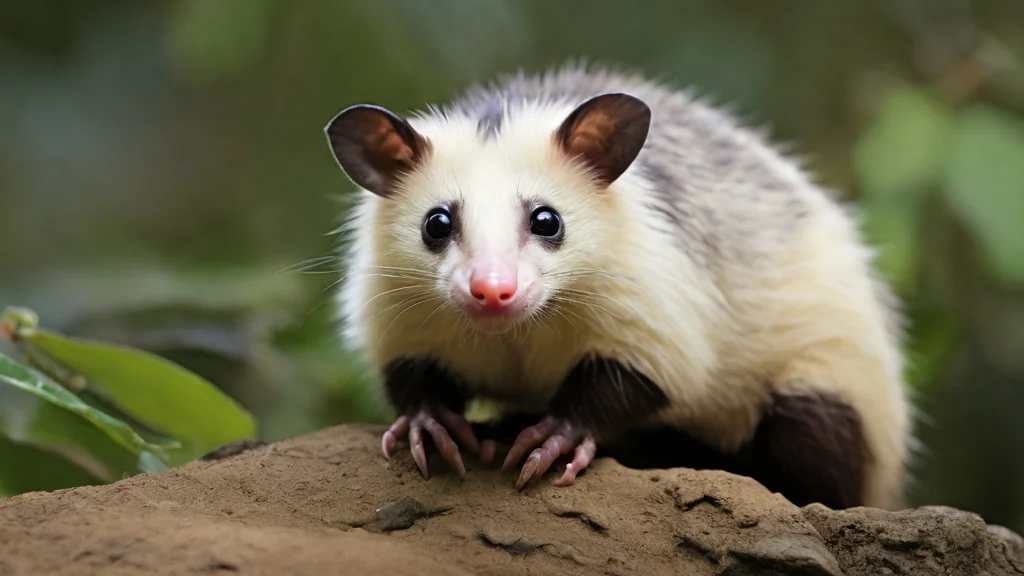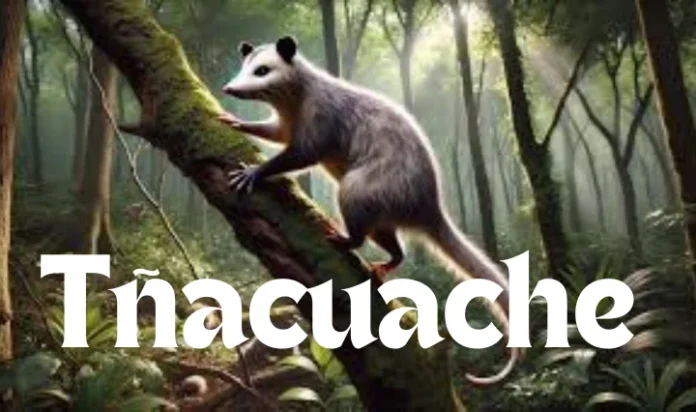Introduction to Tñacuache
In the vast tapestry of wildlife, the tñacuache stands out as a fascinating yet often misunderstood creature. This small marsupial, commonly known as the opossum in English-speaking regions, holds a unique place in various ecosystems and cultures worldwide. From its nocturnal habits to its diverse diet, the tñacuache is a marvel of nature that deserves more attention and appreciation. In this blog post, we will explore the world of the tñacuache, examining its behavior, ecological role, cultural significance, and the challenges it faces in today’s rapidly changing environment.
Tñacuache Behavior and Characteristics
Tñacuaches are nocturnal animals, meaning they are most active during the night. They have a distinctive appearance with their pointed snouts, sharp teeth, and long, hairless tails. Their diet is omnivorous, consisting of fruits, insects, small animals, and even carrion, which contributes to their adaptability in various habitats. These marsupials are known for their impressive immune systems, which allow them to resist certain toxins and diseases that would be harmful to other animals.
One of the most notable behaviors of the tñacuache is its “playing dead” act, also known as thanatosis. When threatened, a tñacuache can enter a catatonic state, mimicking the appearance and smell of a dead animal to deter predators. This unique defense mechanism is not a conscious act but rather an involuntary response to extreme stress. Additionally, tñacuaches are excellent climbers, using their prehensile tails to grasp branches and navigate through trees with ease.
The Role of Tñacuache in Ecosystems
Tñacuaches play a crucial role in maintaining the balance of ecosystems. As scavengers, they help clean up the environment by consuming dead animals and organic waste, reducing the spread of diseases. Their diet also includes a variety of pests, such as insects and small rodents, making them valuable natural pest controllers. By dispersing seeds through their feces, tñacuaches contribute to plant diversity and forest regeneration.
In addition to their direct ecological contributions, tñacuaches serve as prey for larger predators, including owls, foxes, and coyotes. This positions them as an integral part of the food web, supporting the health and stability of their habitats. The presence of tñacuaches in an ecosystem can indicate a healthy, functioning environment, underscoring their importance in biodiversity conservation efforts.
Tñacuache in Pop Culture
The tñacuache has made its mark in various cultures, often appearing in folklore, mythology, and popular media. In Mexican culture, the tñacuache is a symbol of cunning and resourcefulness. Legends tell of a tñacuache stealing fire from the gods to bring warmth to humanity, highlighting its clever and mischievous nature. This story has been passed down through generations, solidifying the tñacuache’s place in cultural heritage.
In modern times, tñacuaches have appeared in movies, television shows, and literature, often characterized as quirky and resilient creatures. Animated films and cartoons frequently depict tñacuaches as endearing, if somewhat comical, animals, capturing their unique behaviors and charm. These representations help raise awareness and appreciation for the tñacuache, bridging the gap between human perception and the animal’s true nature.
Conservation Efforts and Threats to Tñacuache

Despite their ecological importance, tñacuaches face numerous threats that jeopardize their survival. Habitat loss due to urbanization and deforestation is a significant concern, as it reduces the availability of food and shelter. Human-wildlife conflict also poses risks, with tñacuaches often falling victim to road accidents, poisoning, and persecution out of fear or misunderstanding.
Conservation efforts are underway to protect tñacuaches and their habitats. Wildlife organizations and researchers work to raise awareness about the benefits of tñacuaches, promoting coexistence and habitat restoration. Additionally, rehabilitation centers provide care for injured or orphaned tñacuaches, preparing them for release back into the wild. These initiatives are vital for ensuring the long-term survival of tñacuache populations and preserving their role in ecosystems.
Interactions with Humans
Tñacuaches often find themselves in close proximity to human settlements, leading to a range of interactions. Common misconceptions about tñacuaches include the belief that they are aggressive or carriers of rabies. In reality, tñacuaches are generally shy and non-confrontational animals that pose little threat to humans. Their low body temperature makes them unlikely carriers of rabies compared to other mammals.
To foster peaceful coexistence, it is important to educate communities about the ecological benefits of tñacuaches and the ways to minimize conflicts. Simple measures, such as securing trash cans, removing outdoor pet food, and sealing entry points to homes, can reduce the likelihood of attracting tñacuaches to residential areas. Encouraging tolerance and understanding can help create a harmonious relationship between humans and these intriguing marsupials.
Conclusion
The tñacuache is a remarkable animal that enriches our ecosystems and cultural narratives. By understanding its behavior, recognizing its ecological contributions, and addressing the threats it faces, we can better appreciate and protect this unique species. As you continue to learn about the tñacuache, consider supporting conservation efforts, sharing knowledge with others, and fostering a deeper connection with the natural world. Together, we can ensure that the tñacuache continues to thrive and play its vital role in the tapestry of life.

